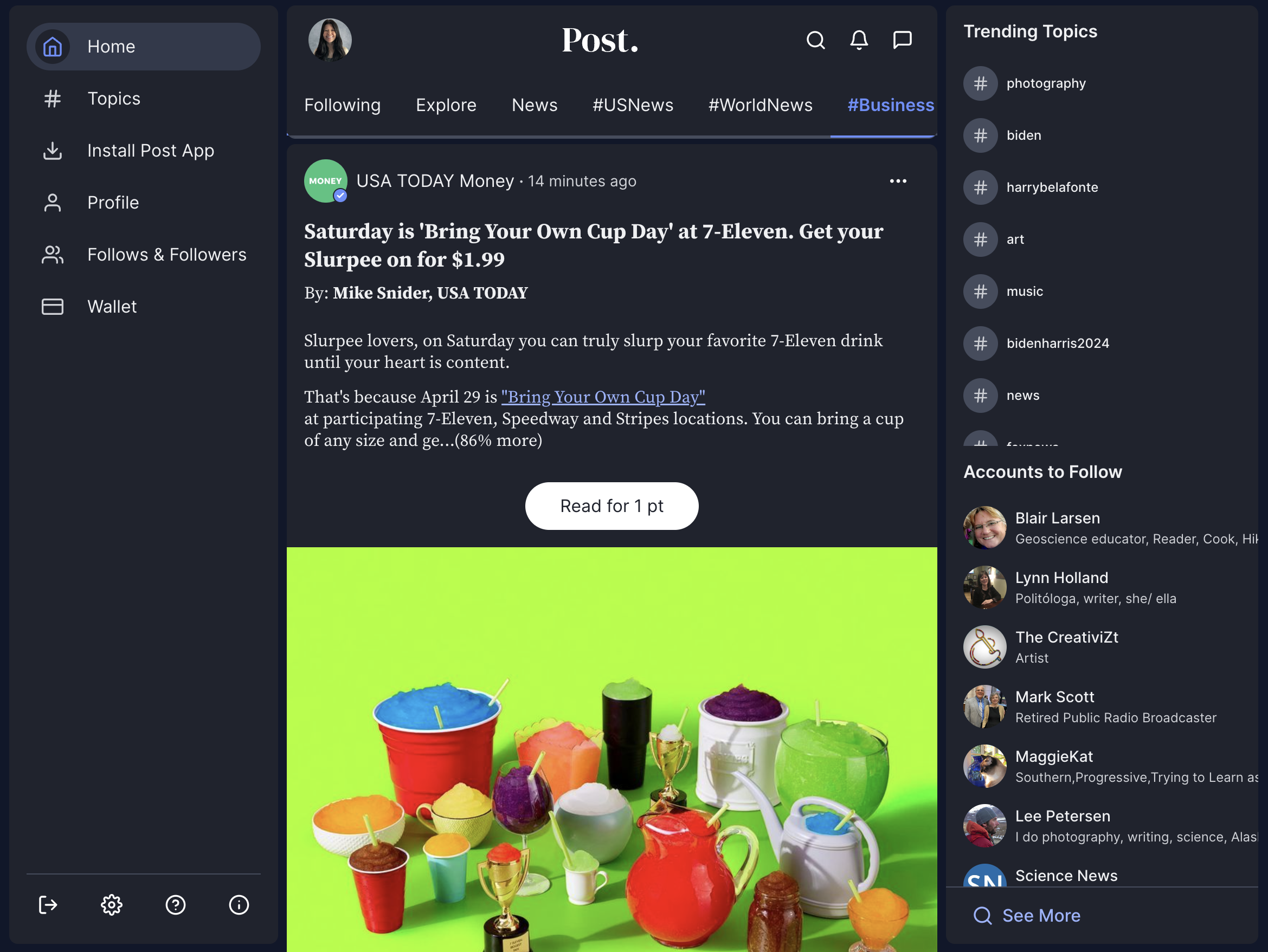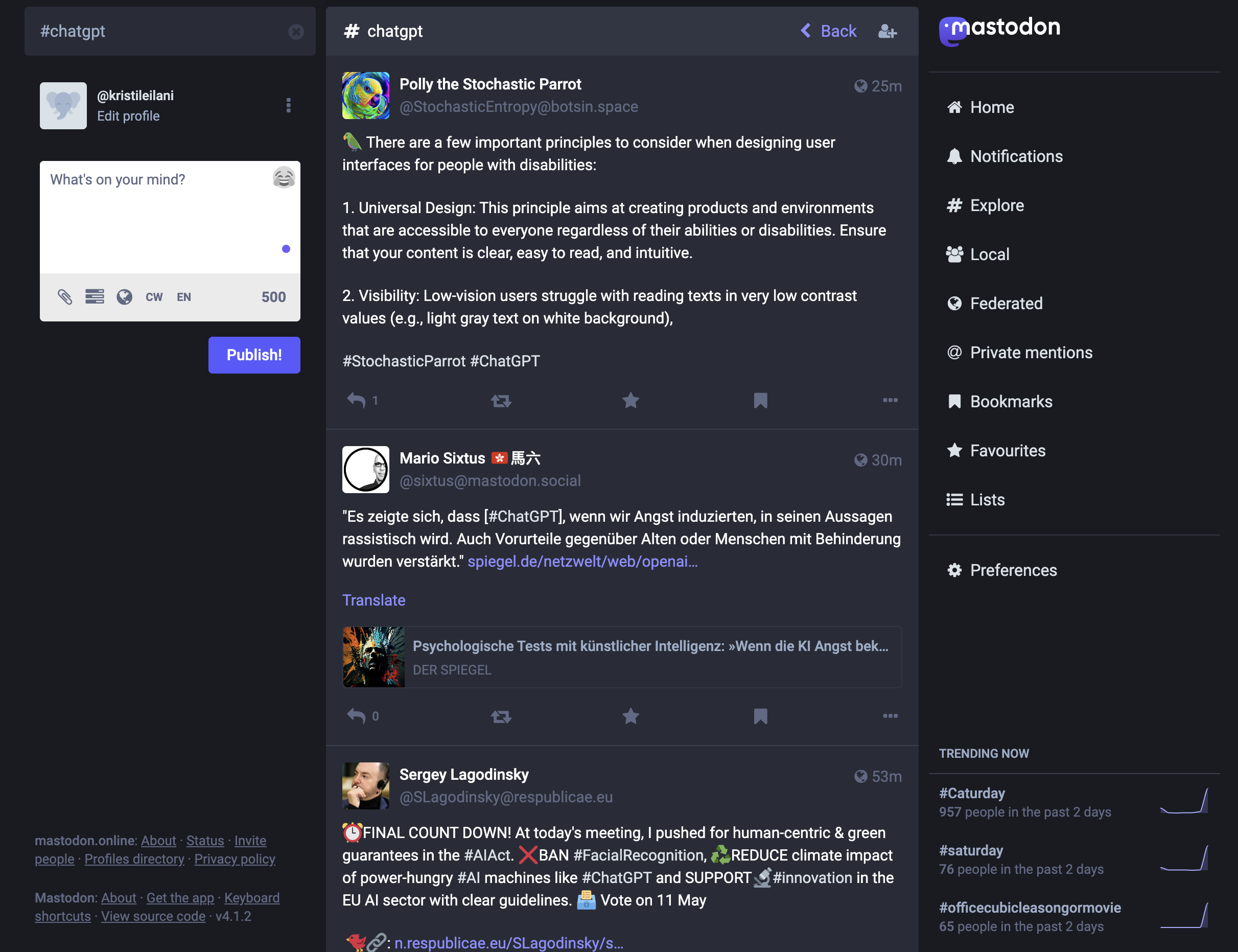SEO
Can These Emerging Microblogging Networks Succeed?

Since Elon Musk became CEO of Twitter and laid off thousands of employees, former Twitter employees and Big Tech competitors have focused on creating Twitter alternatives.
While none can rival Twitter’s audience size of 556 million members yet, they offer those dissatisfied with Twitter’s new policies a fresh start.
Spearheaded by former Twitter employees and other notable names in Big Tech, these emerging microblogging networks offer new platforms for expression without fear of censorship, loss of privacy, and algorithmic control.
Let’s examine the top Twitter alternatives and their features and potential impact.
What Are Some Emerging Twitter Alternatives?
Spill, founded by former Twitter employees, plans to use blockchain technology to compensate content creators on the conversational platform. You can reserve your username now and get notified when it goes live.
T2, also developed by former Twitter employees, offers verification checks to Twitter users with legacy verification. (I hope you captured a screenshot of your profile before the end of the legacy verified program.)
Backed by former Twitter exec Jack Dorsey, Bluesky launched as an invite-only community built on the AT Protocol for large-scale distributed social apps. The Bluesky app has been downloaded over 245,000 times.
Former Twitter employees are not the only ones investing in Twitter competition.
Post.news, founded by former Waze CEO Noam Bardin, connects readers with their favorite publishers without ads or subscription fees. They offer a free blue checkmark.
 Screenshot from Post.news, April 2023
Screenshot from Post.news, April 2023Substack introduced Notes, which allows Substack users to post short-form updates to engage with readers. These updates show in a Twitter-like stream in the Substack app.
 Screenshot from Substack, April 2023
Screenshot from Substack, April 2023Verified checkmarks designate Substack authors with hundreds to tens of thousands of paid subscribers.
Meta confirmed the development of Barcelona/P92, a “decentralized” platform for text updates. Some refer to it as Instagram for text.
The move is no surprise considering Meta has experimented with more text-based features for Instagram, like Notes and Broadcast Channels.
How Successful Are Twitter Alternatives?
Mastodon, an open-source, decentralized platform built on ActivityPub, allows users to connect with others without ads or algorithms. According to its statistics page, there are over six million Mastodon users, but only a little over a sixth are active users as of April 2023.
 Screenshot from Mastodon, April 2023
Screenshot from Mastodon, April 2023It’s an impressive start for a platform that launched in November 2022.
Several microblogging sites were developed for people who felt their voices were suppressed on Twitter and other major platforms over political viewpoints.
Parler was a favorite of millions of Conservatives. Launched in 2018, it was acquired by Starboard.
The new owners see “tremendous opportunities across multiple sectors to continue to serve marginalized or even outright censored communities – even extending beyond domestic politics.”
Gettr, launched in 2021 to support free speech without political discrimination, has over seven million users in 192 countries.
Truth Social, launched in 2022 by Trump Media and Technology Group, has over five million users. While it was also built on the premise of free speech, it reportedly censors content as well.
Are Twitter Alternatives Worth Joining?
If you look at the history of social media, many social networking sites have a lifespan of several years.
Consider Google-owned Orkut (2004 – 2014) and Google+ (2011 – 2019). Both platforms amassed hundreds of millions of users but couldn’t compete with the likes of Facebook, Instagram, and Twitter.
It doesn’t matter what person or organization created the platform. Every social network was new at one point, but not every network was built to last.
If you immerse yourself in a social network early on, you can establish yourself or your business as an authority in an environment with less competition. Even if it doesn’t stand the test of time, you might get some value from being an early adopter.
Here are a few things to consider:
- Are your customers talking about it? If enough customers ask you if you are on a specific social network, you should see why.
- Are your competitors using it? If your competitors have an engaged audience on a specific network, you should look into it.
- Do you have the time for it? If you must sacrifice resources from an established, profitable channel, you should revisit the idea next quarter.
One of the advantages of emerging Twitter competitors: it doesn’t take much to update your status. Unlike platforms that offer profiles, pages, groups, blogs, etc., you can establish yourself on most new networks with one profile and simple text-based updates.
If you want to start dipping your toe into a new microblogging network, here is a simple strategy:
- Group browser bookmarks and app icons for new social networks together.
- Copy the next text-based update you plan to share on Twitter, LinkedIn, etc.
- After you share the update, paste it to your profiles on the other microblogging networks.
- Check your notifications and engage with the people who have engaged with your content.
- Engage with updates from those you follow.
As new social platforms continue to surface, it remains to be seen if any will successfully dethrone Twitter.
Still, one thing is sure: the ever-evolving social media landscape is opening up new possibilities for innovation, creativity, and communication, pushing the boundaries of what we can expect from digital interactions in the future.
Featured image: Kaspars Grinvalds/Shutterstock
SEO
brightonSEO Live Blog

Hello everyone. It’s April again, so I’m back in Brighton for another two days of Being the introvert I am, my idea of fun isn’t hanging around our booth all day explaining we’ve run out of t-shirts (seriously, you need to be fast if you want swag!). So I decided to do something useful and live-blog the event instead.
Follow below for talk takeaways and (very) mildly humorous commentary. sun, sea, and SEO!
SEO
Google Further Postpones Third-Party Cookie Deprecation In Chrome

Google has again delayed its plan to phase out third-party cookies in the Chrome web browser. The latest postponement comes after ongoing challenges in reconciling feedback from industry stakeholders and regulators.
The announcement was made in Google and the UK’s Competition and Markets Authority (CMA) joint quarterly report on the Privacy Sandbox initiative, scheduled for release on April 26.
Chrome’s Third-Party Cookie Phaseout Pushed To 2025
Google states it “will not complete third-party cookie deprecation during the second half of Q4” this year as planned.
Instead, the tech giant aims to begin deprecating third-party cookies in Chrome “starting early next year,” assuming an agreement can be reached with the CMA and the UK’s Information Commissioner’s Office (ICO).
The statement reads:
“We recognize that there are ongoing challenges related to reconciling divergent feedback from the industry, regulators and developers, and will continue to engage closely with the entire ecosystem. It’s also critical that the CMA has sufficient time to review all evidence, including results from industry tests, which the CMA has asked market participants to provide by the end of June.”
Continued Engagement With Regulators
Google reiterated its commitment to “engaging closely with the CMA and ICO” throughout the process and hopes to conclude discussions this year.
This marks the third delay to Google’s plan to deprecate third-party cookies, initially aiming for a Q3 2023 phaseout before pushing it back to late 2024.
The postponements reflect the challenges in transitioning away from cross-site user tracking while balancing privacy and advertiser interests.
Transition Period & Impact
In January, Chrome began restricting third-party cookie access for 1% of users globally. This percentage was expected to gradually increase until 100% of users were covered by Q3 2024.
However, the latest delay gives websites and services more time to migrate away from third-party cookie dependencies through Google’s limited “deprecation trials” program.
The trials offer temporary cookie access extensions until December 27, 2024, for non-advertising use cases that can demonstrate direct user impact and functional breakage.
While easing the transition, the trials have strict eligibility rules. Advertising-related services are ineligible, and origins matching known ad-related domains are rejected.
Google states the program aims to address functional issues rather than relieve general data collection inconveniences.
Publisher & Advertiser Implications
The repeated delays highlight the potential disruption for digital publishers and advertisers relying on third-party cookie tracking.
Industry groups have raised concerns that restricting cross-site tracking could push websites toward more opaque privacy-invasive practices.
However, privacy advocates view the phaseout as crucial in preventing covert user profiling across the web.
With the latest postponement, all parties have more time to prepare for the eventual loss of third-party cookies and adopt Google’s proposed Privacy Sandbox APIs as replacements.
Featured Image: Novikov Aleksey/Shutterstock
SEO
How To Write ChatGPT Prompts To Get The Best Results

ChatGPT is a game changer in the field of SEO. This powerful language model can generate human-like content, making it an invaluable tool for SEO professionals.
However, the prompts you provide largely determine the quality of the output.
To unlock the full potential of ChatGPT and create content that resonates with your audience and search engines, writing effective prompts is crucial.
In this comprehensive guide, we’ll explore the art of writing prompts for ChatGPT, covering everything from basic techniques to advanced strategies for layering prompts and generating high-quality, SEO-friendly content.
Writing Prompts For ChatGPT
What Is A ChatGPT Prompt?
A ChatGPT prompt is an instruction or discussion topic a user provides for the ChatGPT AI model to respond to.
The prompt can be a question, statement, or any other stimulus to spark creativity, reflection, or engagement.
Users can use the prompt to generate ideas, share their thoughts, or start a conversation.
ChatGPT prompts are designed to be open-ended and can be customized based on the user’s preferences and interests.
How To Write Prompts For ChatGPT
Start by giving ChatGPT a writing prompt, such as, “Write a short story about a person who discovers they have a superpower.”
ChatGPT will then generate a response based on your prompt. Depending on the prompt’s complexity and the level of detail you requested, the answer may be a few sentences or several paragraphs long.
Use the ChatGPT-generated response as a starting point for your writing. You can take the ideas and concepts presented in the answer and expand upon them, adding your own unique spin to the story.
If you want to generate additional ideas, try asking ChatGPT follow-up questions related to your original prompt.
For example, you could ask, “What challenges might the person face in exploring their newfound superpower?” Or, “How might the person’s relationships with others be affected by their superpower?”
Remember that ChatGPT’s answers are generated by artificial intelligence and may not always be perfect or exactly what you want.
However, they can still be a great source of inspiration and help you start writing.
Must-Have GPTs Assistant
I recommend installing the WebBrowser Assistant created by the OpenAI Team. This tool allows you to add relevant Bing results to your ChatGPT prompts.
This assistant adds the first web results to your ChatGPT prompts for more accurate and up-to-date conversations.
It is very easy to install in only two clicks. (Click on Start Chat.)
For example, if I ask, “Who is Vincent Terrasi?,” ChatGPT has no answer.
With WebBrower Assistant, the assistant creates a new prompt with the first Bing results, and now ChatGPT knows who Vincent Terrasi is.
 Screenshot from ChatGPT, March 2023
Screenshot from ChatGPT, March 2023You can test other GPT assistants available in the GPTs search engine if you want to use Google results.
Master Reverse Prompt Engineering
ChatGPT can be an excellent tool for reverse engineering prompts because it generates natural and engaging responses to any given input.
By analyzing the prompts generated by ChatGPT, it is possible to gain insight into the model’s underlying thought processes and decision-making strategies.
One key benefit of using ChatGPT to reverse engineer prompts is that the model is highly transparent in its decision-making.
This means that the reasoning and logic behind each response can be traced, making it easier to understand how the model arrives at its conclusions.
Once you’ve done this a few times for different types of content, you’ll gain insight into crafting more effective prompts.
Prepare Your ChatGPT For Generating Prompts
First, activate the reverse prompt engineering.
- Type the following prompt: “Enable Reverse Prompt Engineering? By Reverse Prompt Engineering I mean creating a prompt from a given text.”
 Screenshot from ChatGPT, March 2023
Screenshot from ChatGPT, March 2023ChatGPT is now ready to generate your prompt. You can test the product description in a new chatbot session and evaluate the generated prompt.
- Type: “Create a very technical reverse prompt engineering template for a product description about iPhone 11.”
 Screenshot from ChatGPT, March 2023
Screenshot from ChatGPT, March 2023The result is amazing. You can test with a full text that you want to reproduce. Here is an example of a prompt for selling a Kindle on Amazon.
- Type: “Reverse Prompt engineer the following {product), capture the writing style and the length of the text :
product =”
 Screenshot from ChatGPT, March 2023
Screenshot from ChatGPT, March 2023I tested it on an SEJ blog post. Enjoy the analysis – it is excellent.
- Type: “Reverse Prompt engineer the following {text}, capture the tone and writing style of the {text} to include in the prompt :
text = all text coming from https://www.searchenginejournal.com/google-bard-training-data/478941/”
 Screenshot from ChatGPT, March 2023
Screenshot from ChatGPT, March 2023But be careful not to use ChatGPT to generate your texts. It is just a personal assistant.
Go Deeper
Prompts and examples for SEO:
- Keyword research and content ideas prompt: “Provide a list of 20 long-tail keyword ideas related to ‘local SEO strategies’ along with brief content topic descriptions for each keyword.”
- Optimizing content for featured snippets prompt: “Write a 40-50 word paragraph optimized for the query ‘what is the featured snippet in Google search’ that could potentially earn the featured snippet.”
- Creating meta descriptions prompt: “Draft a compelling meta description for the following blog post title: ’10 Technical SEO Factors You Can’t Ignore in 2024′.”
Important Considerations:
- Always Fact-Check: While ChatGPT can be a helpful tool, it’s crucial to remember that it may generate inaccurate or fabricated information. Always verify any facts, statistics, or quotes generated by ChatGPT before incorporating them into your content.
- Maintain Control and Creativity: Use ChatGPT as a tool to assist your writing, not replace it. Don’t rely on it to do your thinking or create content from scratch. Your unique perspective and creativity are essential for producing high-quality, engaging content.
- Iteration is Key: Refine and revise the outputs generated by ChatGPT to ensure they align with your voice, style, and intended message.
Additional Prompts for Rewording and SEO:
– Rewrite this sentence to be more concise and impactful.
– Suggest alternative phrasing for this section to improve clarity.
– Identify opportunities to incorporate relevant internal and external links.
– Analyze the keyword density and suggest improvements for better SEO.
Remember, while ChatGPT can be a valuable tool, it’s essential to use it responsibly and maintain control over your content creation process.
Experiment And Refine Your Prompting Techniques
Writing effective prompts for ChatGPT is an essential skill for any SEO professional who wants to harness the power of AI-generated content.
Hopefully, the insights and examples shared in this article can inspire you and help guide you to crafting stronger prompts that yield high-quality content.
Remember to experiment with layering prompts, iterating on the output, and continually refining your prompting techniques.
This will help you stay ahead of the curve in the ever-changing world of SEO.
More resources:
Featured Image: Tapati Rinchumrus/Shutterstock
-

 PPC6 days ago
PPC6 days ago19 Best SEO Tools in 2024 (For Every Use Case)
-

 MARKETING7 days ago
MARKETING7 days agoEcommerce evolution: Blurring the lines between B2B and B2C
-
SEARCHENGINES5 days ago
Daily Search Forum Recap: April 19, 2024
-
SEARCHENGINES6 days ago
Daily Search Forum Recap: April 18, 2024
-

 WORDPRESS6 days ago
WORDPRESS6 days agoHow to Make $5000 of Passive Income Every Month in WordPress
-

 SEO7 days ago
SEO7 days ago2024 WordPress Vulnerability Report Shows Errors Sites Keep Making
-

 WORDPRESS6 days ago
WORDPRESS6 days ago10 Amazing WordPress Design Resouces – WordPress.com News
-

 SEO6 days ago
SEO6 days ago25 WordPress Alternatives Best For SEO















